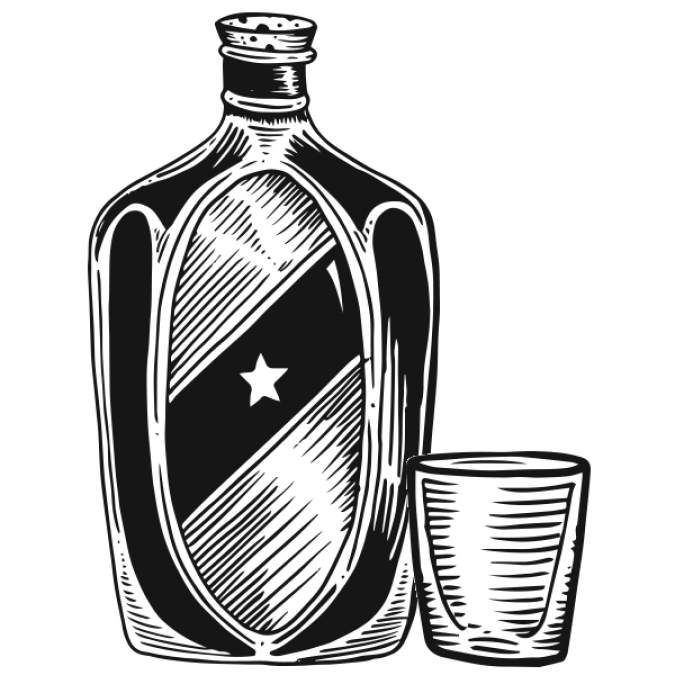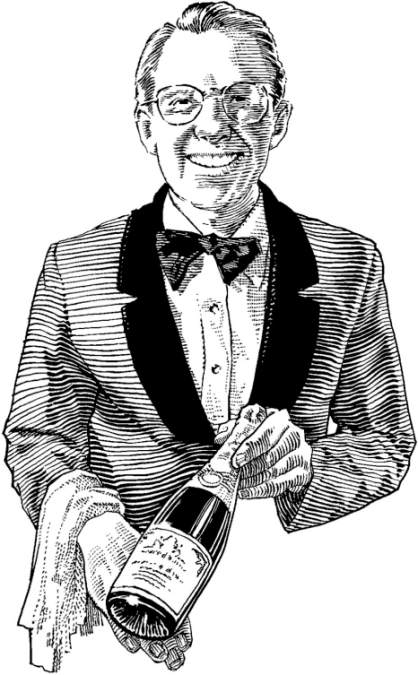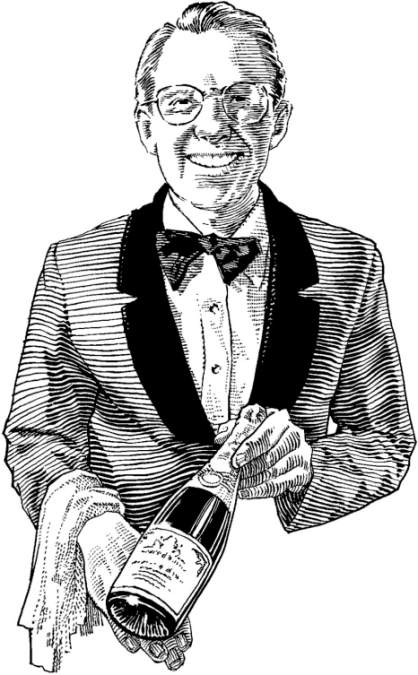Panic set in on the third sip. Where was the fruit? Why couldn’t I pick out any minerality? Sure, there was a bit of the richness I’d anticipated, but the oak presence on the nose wasn’t showing through on the palate. What the hell was this wine? Frantically looking around the room, I saw my fellow examinees scribbling away furiously, lending more credence to the idea that I was doomed. “Breathe,” I told myself. “You have plenty of time to do this, just relax.” Yeah, right. I was about to fail this test, and it had only started two minutes ago.
Welcome to the Certified Sommelier exam, the second of four levels one must pass to earn the prestigious title of Master Sommelier from the Court of Master Sommeliers. The test is offered at sites around the world to candidates who have passed the Introductory level-one test. Over the course of a year, hundreds if not thousands of aspiring sommeliers will have a full day of testing—and the related anxiety—which was preceded by months of study, practice, and discussion. Oh, and tasting a lot of wine. So I guess it wasn’t all bad.
Those of you familiar with the documentary SOMM know that exams through the Court of Master Sommeliers consist of three parts: blind tasting, theory, and service. At the Certified level, the first two parts are written, while the service portion is conducted orally.
Blind tasting was first, and while I was cautious and wary about all three sections of the exam, I felt most confident in tasting. I’d met with my tasting group regularly in the months leading up to the test, and in my practice exams I’d done quite well. Of course, that all went out the window when the white wine was just . . . bland. I mean, it was a bit oaky, it had some elevated alcohol, and citrus notes, but not really anything else worth talking about. That said, trying to wake up my taste buds at 8:20 a.m. on a Sunday was itself a challenge. Fearing that I might overload my sense of taste (or burn my mouth), I’d forsworn my usual morning coffee, settling instead for a cup of warm green tea. Given that my stomach was churning too much to eat any breakfast, I was hoping for a bold and expressive wine to get me started. No such luck. Groping for a conclusion, I unenthusiastically settled on Napa chardonnay, and turned to the red.
Fortunately, the red wine smelled like a pepper grinder, was aggressively alcoholic, and was suffused with tons of American oak indicators like coconut and dill. Since Australian shiraz has all those flavor markers and is classically aged in new American oak, the wine might as well have said “G’day, mate.”
Feeling a bit better, I turned to theory, which was straightforward and manageable—except that I spent way too much time staring at a graphic of a still (a device for distilling alcohol), trying to remember if it was an alembic or a continuous still. (It was an alembic.) I then had a bit of a break before my service exam—enough time to drink a cappuccino and (ironically) a beer. In that order.
During my preparation, it was the service portion that I was most concerned about. Despite waiting tables for a living, I feared that all my hard-earned experience would go right out the window under the unique pressure of this test. After all, it’s not often that I serve a mediocre cava masquerading as tete de cuvee–level Champagne (since no one actually drinks the wine) to a single Master Sommelier at 11:30 a.m. in a brightly lit room where the other three chairs at the table are empty. Frankly, I’m glad I didn’t drop a glass (several test-takers did). Trying to appear poised and calm while your legs are shaking like “The Big One” has finally hit Seattle isn’t something I’m keen to try again. Making it relatively unscathed through the opening and pouring of the wine, I got ready to face The Inquisition. OK, maybe it was just some questions about wine pairings and cocktails, but it still scared the crap out of me. Of course I blanked on one cocktail, but to be fair, no one orders a Madras these days.
With the test finished, it was time to retreat to the bar and discuss it with my fellow applicants, hash out where we went wrong, and silently assess our chances of passing. Given that the pass rate is somewhere around 60 percent, we all knew that some of us were going home unhappy.
Finally, the magic hour came.
Cruelly, we were all herded back into the room where we’d taken the written exam, and after a brief “You all did great,” the names started. See, the Court likes to make you squirm a bit, so instead of just posting a list or notifying you individually, they read out names. If you hear your name, you passed: Step up to the front, shake some hands, get your certificate and a pin, and relish your Champagne. If not . . .
Let me tell you, I can’t think of another time in my life when I’ve been happier to hear someone say “Zachary Geballe.” Though it took a few more hours (and several more drinks) for my nerves to settle, the combination of relief and exhilaration that ran through me at that moment was . . . well, it was a hell of a lot better than that white wine.
barcode@seattleweekly.com






